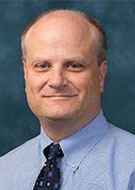 Clinical data registries can be a powerful tool to assess and improve patient care quality in real-time and address some of the issues surrounding treatments available and how different patients respond to them. Today more than ever, every piece of information is valuable to someone, and clinical data registries can fuel ongoing research and development, inform patients and their health care professionals on the best course of treatment, and improve care for patients in the future.
Clinical data registries can be a powerful tool to assess and improve patient care quality in real-time and address some of the issues surrounding treatments available and how different patients respond to them. Today more than ever, every piece of information is valuable to someone, and clinical data registries can fuel ongoing research and development, inform patients and their health care professionals on the best course of treatment, and improve care for patients in the future.
This year, the Radiology Society of North America (RSNA) and the American College of Radiology (ACR) announced they will launch a new medical 3D printing clinical data registry to collect point of care 3D printing data to prove its worth to the radiology community.
“The creation of the joint RSNA-ACR 3D Printing Registry is essential for the advancement of clinical 3D printing. The registry will allow us to collect data in support of the appropriate use of this technology and its value in clinical decision making,” said William Weadock, professor of radiology at the University of Michigan and chair of the RSNA 3D Printing Special Interest Group (SIG).
According to RSNA, the registry data will enable essential analyses to demonstrate the clinical value of 3D printing, which has been challenging to date because of the rich diversity of clinical indications, the different technologies for generating physical models from medical images and the complexity of the models.
RSNA is very involved in advancing the technology within the medical field. Their core belief is that even though 3D printing for patient care crosses all subspecialties of medicine, radiology is always at the intersection, playing an important role in developing medical applications for this technology. The registry is a project of the SIG initiative which intends to help promote 3D printing for medical applications via education, research and collaborations, as well as provide physicians and allied health scientists with optimized education and research programs. SIG specialists also assist in developing quality standards for 3D printing.
To complement the effort, a joint ACR-RSNA committee will govern the registry which will be released in the fall of 2019 and will allow both organizations to analyze clinical decision making and demonstrate the importance of medical 3D printing to the radiology field.
This announcement follows the recently approved codes by the American Medical Association (AMA) for the use of 3D printing to create anatomic models and anatomic guides. With the benefits of 3D printing in medicine becoming ever more valuable, having access to models based on patients CT and PET imaging makes preparing for medical procedures so much easier and cost-effective.
Since July, four new Category III Current Procedural Terminology (CPT) codes have been released. CPT is the technical name for the medical code set that is used to report medical, surgical, and diagnostic procedures and services to physicians, health insurance companies and accreditation organizations. Medical coding is a major factor in obtaining insurance reimbursement as well as maintaining patient records, allowing the insurance payer to know the illness or injury of the patient and the method of treatment.
“Medical models and surgical guides have been 3D printed for well over a decade, as niche applications —and without CPT codes. For example, craniomaxillofacial care providers generally accept that 3D printing is valuable and integral to patient care,” suggested Frank Rybicki, chair of the ACR Committee on Appropriateness Criteria and founding chair of the RSNA SIG. “However, when applying for CPT codes, it became clear that this ‘general acceptance’ lacked peer-reviewed literature to demonstrate value. This registry will supply data to benchmark the value of this subspecialty.”
The 3D printing registry will be hosted by the ACR’s National Radiology Data Registry (NRDR) system, which is a leading platform for clinical quality registries in imaging. NRDR currently houses six registries with more than 6,500 participant sites and over 150 million cumulative cases.
Formlabs, HP, Materialise and Stratasys will provide critical financial support in the form of unrestricted grants for the initiative, which is focusing on channeling and simplifying the amount of information available today. For anyone interested in participating, the details will be posted to the NRDR website as they become available.
According to Charles Kahn, chair of the RSNA Radilogy Informatics Committee, explained that “the RSNA 3D Printing SIG has brought together leaders from radiology practice and from the 3D printing industry to advance the science and applications of this important new technology,” and the new “registry will help us understand the value that 3D printing can bring to clinical practice.”
As the field of customized medicine advances, the utility of real-world data to support the development of improved therapies is becoming increasingly evident. There is an unmet need to render Digital Imaging and Communications in Medicine (DICOM) images as 3D printed models capable of providing both tactile feedback and tangible depth information about anatomic and pathologic states. This new venture will most likely provide the necessary feedback for the medical community and their patients. Data collection and post-analysis can encourage and improve the overall quality of patient care. After all, we are all potential patients and should be interested in ways to improve healthcare.
[Images: RSNA, Materialise and Phoenix Children’s Hospital]Subscribe to Our Email Newsletter
Stay up-to-date on all the latest news from the 3D printing industry and receive information and offers from third party vendors.
You May Also Like
Profiling a Construction 3D Printing Pioneer: US Army Corps of Engineers’ Megan Kreiger
The world of construction 3D printing is still so new that the true experts can probably be counted on two hands. Among them is Megan Kreiger, Portfolio Manager of Additive...
US Army Corps of Engineers Taps Lincoln Electric & Eaton for Largest 3D Printed US Civil Works Part
The Soo Locks sit on the US-Canadian border, enabling maritime travel between Lake Superior and Lake Huron, from which ships can reach the rest of the Great Lakes. Crafts carrying...
Construction 3D Printing CEO Reflects on Being Female in Construction
Natalie Wadley, CEO of ChangeMaker3D, could hear the words of her daughter sitting next to her resounding in her head. “Mum, MUM, you’ve won!” Wadley had just won the prestigious...
1Print to Commercialize 3D Printed Coastal Resilience Solutions
1Print, a company that specializes in deploying additive construction (AC) for infrastructure projects, has entered an agreement with the University of Miami (UM) to accelerate commercialization of the SEAHIVE shoreline...


































